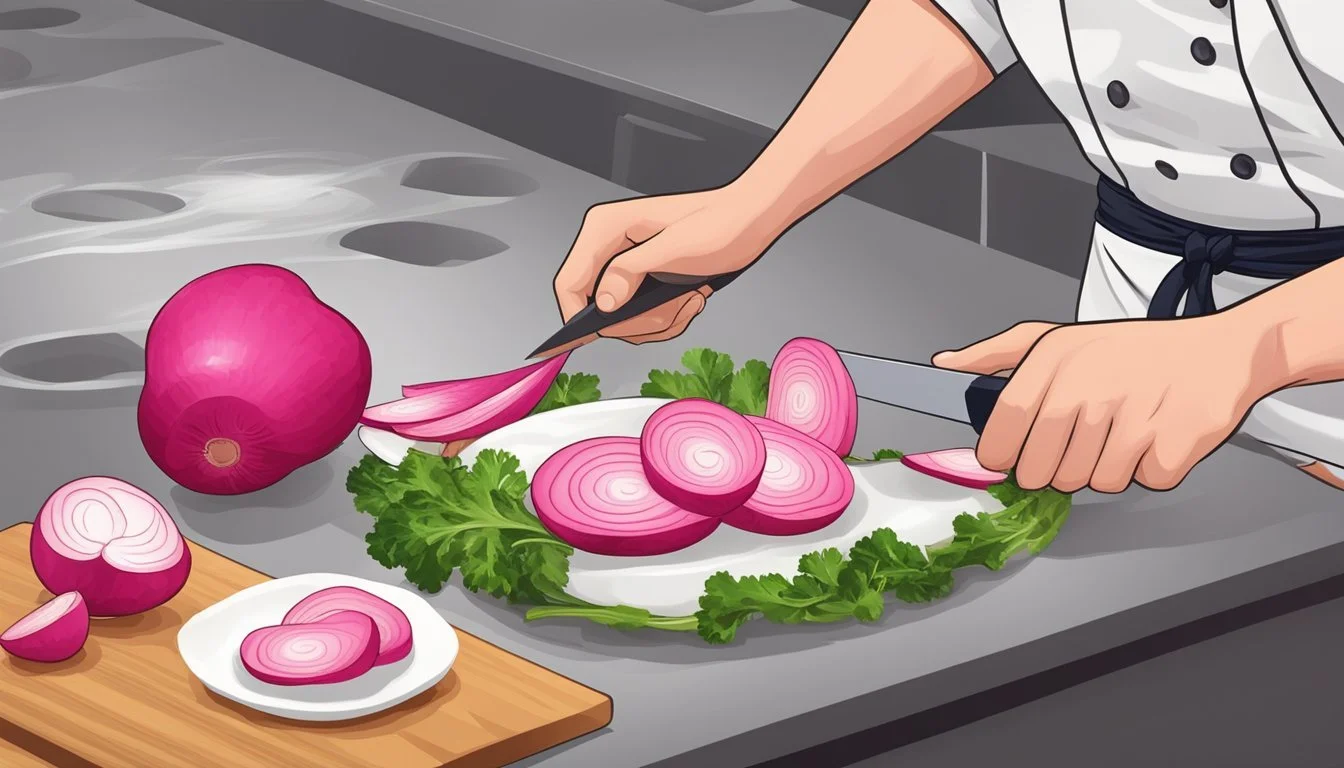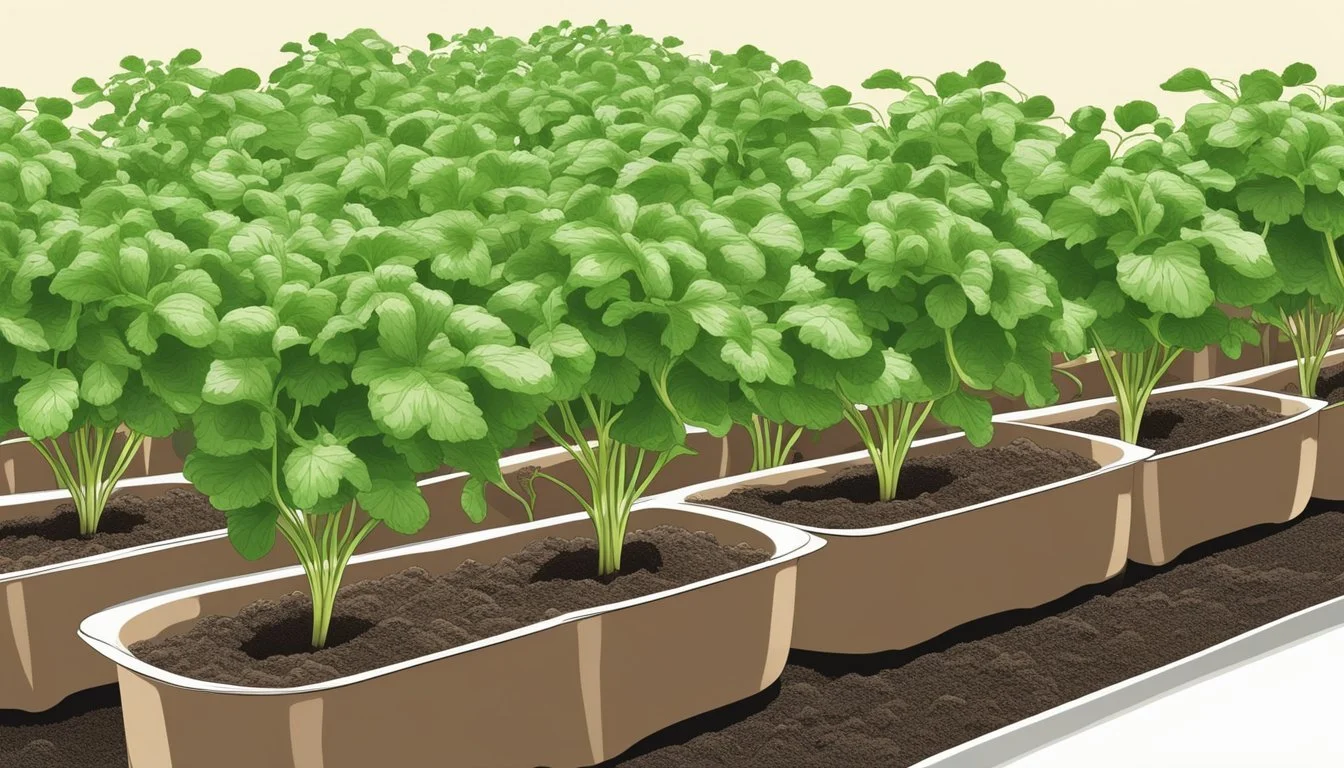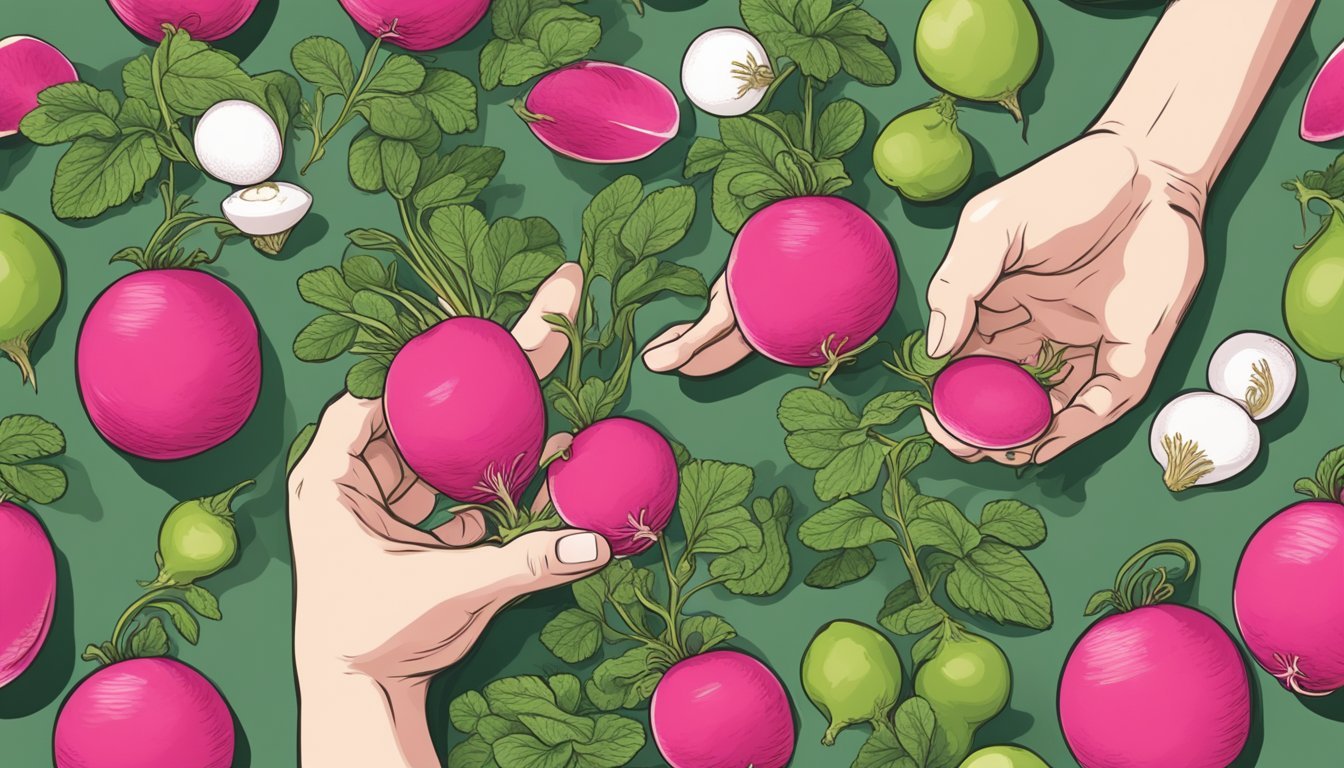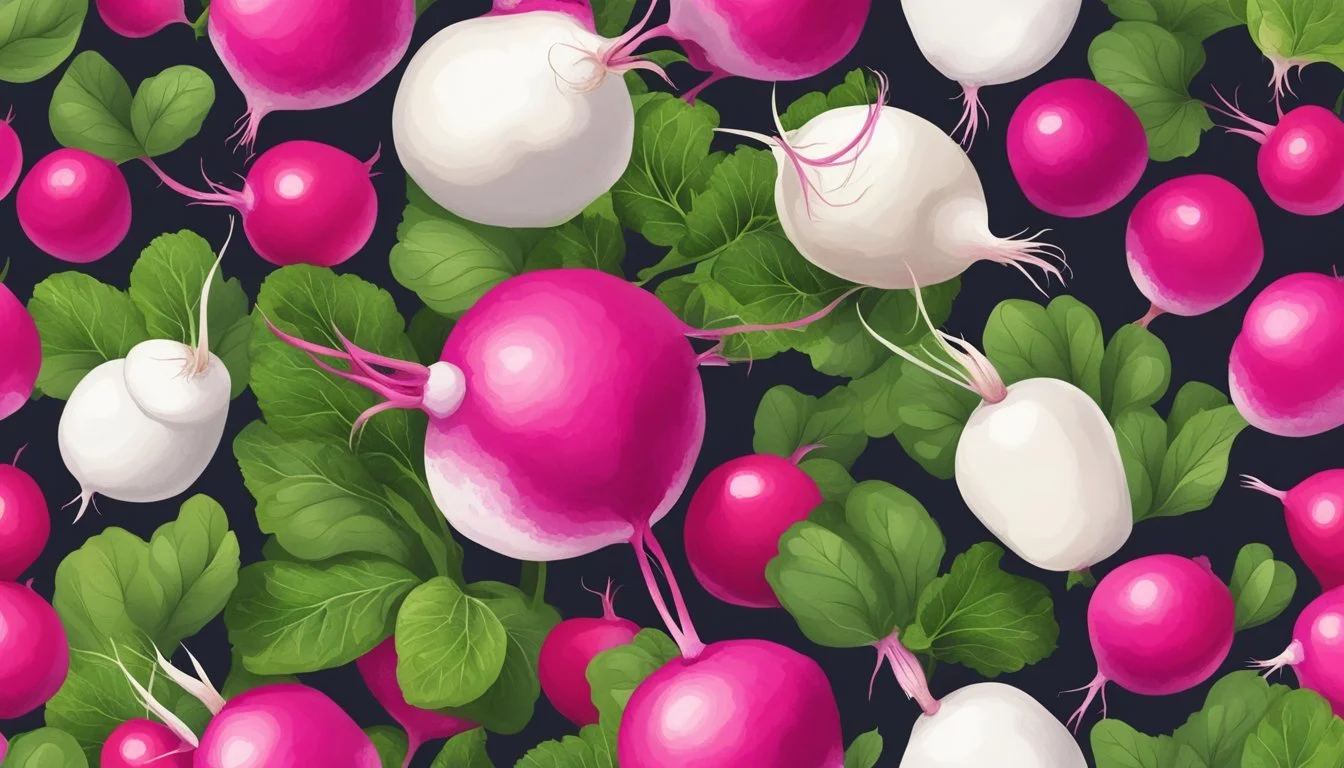China Rose Radish Substitutes
Best Alternatives in Your Kitchen
When you're in the middle of a recipe that calls for China Rose Radish and you realize you don't have any on hand, it can be frustrating. Fortunately, several substitutes can step in and save the dish without compromising flavor. Daikon radish is one of the best alternatives, offering a similar crunchy texture and mildly spicy flavor.
Other options worth considering include red radishes, which provide a peppery bite and are readily available in most grocery stores. For those looking to maintain the Asian authenticity of their dishes, try using Korean radishes, known as mu. They have a firmer texture and a slightly sweeter taste, making them a versatile option in a variety of recipes.
Turnips can also serve as a handy substitute, especially in cooked dishes. Their earthy flavor pairs well with many of the same ingredients that complement China Rose Radish. By keeping these substitutes in mind, you'll be prepared to confidently tackle any culinary challenge.
Understanding China Rose Radishes
China Rose radishes are a type of winter radish known for their distinctive appearance and flavor.
These radishes feature a unique rose and white-colored skin, with a deep rose hue inside. They typically measure 6-8 inches in length and about 2 inches in diameter.
The taste profile of China Rose radishes is slightly spicy yet refreshing. Their flesh is crisp and perfect for slicing fresh in salads.
Besides the roots, the tops of China Rose radishes are also edible. They can be cooked in broth and seasoned to enhance their natural flavor.
Nutritional Benefits:
High in vitamin C, boosting immunity.
Rich in dietary fiber, aiding digestion.
Good source of calcium, potassium, and magnesium, supporting overall health.
Nutritional Profile
China Rose Radish offers a wealth of essential nutrients. It is particularly rich in vitamins and minerals, while dietary fiber and antioxidants contribute to overall health.
Vitamins and Minerals
China Rose Radish is a robust source of vitamin C, which plays a critical role in boosting the immune system and reducing inflammation. A 100g serving contains a significant amount of this vitamin. In addition to vitamin C, this radish also supplies potassium, calcium, and magnesium. Each of these minerals supports different bodily functions:
Potassium: Helps regulate blood pressure.
Calcium: Essential for healthy bones and teeth.
Magnesium: Supports muscle and nerve function.
These nutrients together make the China Rose Radish a valuable addition to any diet.
Dietary Fiber and Antioxidants
China Rose Radish is high in dietary fiber, benefiting digestive health by alleviating constipation and promoting regular bowel movements. Fiber also aids in managing cholesterol levels.
Additionally, this radish is rich in antioxidants. These compounds help combat oxidative stress and reduce the risk of chronic diseases. They neutralize free radicals, protecting cells from damage. The combination of fiber and antioxidants in the China Rose Radish contributes to overall wellness and health maintenance.
Culinary Uses
China Rose Radish Microgreens are lauded for their peppery and subtly spicy taste, adding both flavor and nutritional value to various dishes. They stand out in raw preparations like salads and appetizers and can also be integrated into cooked dishes such as soups and stir-fries.
Salads and Appetizers
The crisp and spicy notes of China Rose Radish Microgreens make them a popular addition to salads. They can be used as a garnish or a primary ingredient. Their vibrant color and sharp flavor enhance mixed greens, coleslaws, and grain salads.
In appetizers, they can elevate the visual appeal and taste of bruschettas, canapés, and even sushi rolls. Incorporating these microgreens adds a fresh twist to classic hors d'oeuvres. Their small size and delicate appearance make them perfect for presentation-focused dishes.
Cooked Dishes
In soups and stir-fries, China Rose Radish Microgreens can be a unique ingredient. They are often added at the last minute to preserve their texture and flavor. In soups, they provide a burst of freshness and a subtle bite when added just before serving.
In stir-fries, they complement other vegetables and proteins, adding a textural contrast. They integrate well in Asian-inspired dishes, enhancing both flavor and presentation. Though primarily used raw, their adaptability makes them a versatile choice in the kitchen.
Growing and Care
China Rose radishes thrive with proper soil preparation, regular watering, and sufficient sunlight. Providing the right spacing and conditions will ensure healthy plant growth and bountiful harvests.
Soil and Watering
China Rose radishes prefer light, sandy soil with good drainage. Soil pH should be neutral, around 6.0 to 7.0. Prioritize soil preparation by loosening it to a depth of 6-10 inches and removing any stones or debris.
Watering is crucial for optimal growth. Keep the soil consistently moist but not waterlogged. Mulching can help retain moisture and reduce weed growth. Aim to water the radishes once daily, especially in warmer weather. Avoid over-watering to prevent mold and root rot.
Sunlight and Space Requirements
China Rose radishes need full sun for at least 6-8 hours per day. Choose a sunny spot in the garden for planting, ensuring they are not shaded by taller plants.
Proper spacing is essential. Plant seeds 2-3 inches apart and thin seedlings to maintain this distance. Rows should be spaced 12 inches apart to provide each plant adequate space to develop. Crowded plants can lead to poor root development and smaller radishes.
Harvesting Tips
When it comes to harvesting China Rose radishes, timing is crucial. These radishes typically reach maturity around 50-60 days after planting. Regularly check the size and color of the radishes to ensure they are ready for harvest.
Harvest them when they are 6"-8" long and have a rose and white-colored skin. This size ensures the radishes have the optimal crisp texture and spicy flavor.
It's essential to harvest during cooler parts of the day, such as early morning or late evening. This helps maintain the radish's crispness and prevents wilting.
To harvest, gently pull the radishes from the soil by grasping the tops near the base. If the soil is compacted, use a hand fork to loosen it around the radish before pulling.
Once harvested, remove the tops to prevent the radishes from drawing moisture from the root, which can result in a loss of crisp texture. Store them in a cool, dry place or refrigerate for extended freshness.
Here is a quick reference table:
Task Details Timing 50-60 days after planting Signs 6"-8" long, rose and white-colored skin Optimal Time Early morning or late evening Method Gently pull or use a hand fork Post-Harvest Remove tops and store in a cool, dry place
By following these tips, the harvested China Rose radishes will maintain their crisp texture, spicy flavor, and overall quality.
Choosing Substitutes
When looking for substitutes for China rose radishes, selecting options that match their unique characteristics like flavor, texture, and color can enhance the dish.
Criteria for Selection
Flavor and Taste: The substitute should have a flavor profile close to China rose radishes. While China rose radishes have a peppery bite, slightly milder alternatives like jicama or turnips may be suitable for those preferring a less intense taste.
Texture: China rose radishes are known for their crisp texture. It's crucial to choose a substitute with a comparable crunch. For instance, jicama offers a similar crunchiness, making it an excellent alternative.
Color: The vibrant color of China rose radishes can be a visual highlight. While color might not affect taste, options like watermelon radish can bring a similar visual appeal to the dish.
Common Substitutes
Jicama: Jicama, a root vegetable, is frequently used as a radish substitute due to its crunchy texture and sweet, nutty flavor. It can be substituted at a 1:1 ratio for radishes in most recipes. While jicama lacks the spiciness of China rose radishes, its texture aligns well.
Turnips: Turnips serve as another versatile alternative. They provide a slightly sweet and less spicy flavor. The texture is quite similar, being crisp and firm. They also offer a way to maintain the health benefits associated with radishes.
Watermelon Radish: Watermelon radish is not only a good textural substitute but also adds visual flair with its vibrant interior. It has a milder taste compared to China rose radishes but maintains that essential crunch.
Horseradish Root: For those who want to retain the spiciness, horseradish root can be a viable choice, albeit with a stronger kick. It’s best used in small quantities and can be mixed with salt and vinegar to balance the flavor.
Substitutes in Detail
Finding a good substitute for China rose radish involves considering alternatives that closely mimic its peppery flavor and crunchy texture. Several vegetables can successfully replace the radish in a variety of dishes, each bringing unique characteristics.
Watermelon Radish
Watermelon radish is an excellent substitute for China rose radish due to its similar peppery flavor and crunchy texture. This vegetable, popular in East Asia, has a distinctive look with a pink skin and vibrant white and pink flesh, making it visually appealing in salads and garnishes.
Nutritionally, watermelon radish provides essential vitamins and minerals such as vitamin C and potassium. Its versatility extends to raw applications, such as salads and crudités, and cooked forms, including pickling and roasting. Its lightly sweet undertones balance well with its mild spiciness, enhancing a wide array of dishes.
Daikon
Daikon radish, also known as mooli in parts of Europe and Asia, serves as a versatile substitute owing to its crunch and mild flavor. Although less spicy than the China rose radish, daikon has a slightly sweet taste which can complement many dishes.
Often used in East Asian cuisines, daikon can be shredded into salads, pickled, or cooked into soups and stews. Nutritionally, it is a low-calorie food packed with vitamin C and other antioxidants, contributing to a healthy diet. Its large size and white flesh make it an effective ingredient in dishes where texture is key.
Turnips
Turnips are another viable replacement, especially considering their white flesh and slightly peppery flavor. While they are more commonly found in Europe, they offer a similar crunchy texture when used raw, though their flavor is milder and sometimes slightly sweet.
This root vegetable can be thinly sliced for salads or cooked in a variety of methods such as roasting, boiling, or mashing. Turnips also provide nutritional benefits, including vitamins C and K, and dietary fiber. Their adaptability makes them a solid choice for various recipes, particularly in colder seasons when turnips are more readily available.
Cabbage
Cabbage, though not a direct substitute, can mimic the crunch and mild spice of China rose radish when used in specific contexts. Common in Europe and East Asia, cabbage's versatile nature allows it to fit into many dishes. Its light flavor lets it absorb spices and dressings well, making it useful in slaws and salads.
When shredded, cabbage can provide a similar crunchy texture and visual appeal. It also offers nutritional benefits, being rich in vitamins C and K, and beneficial compounds like glucosinolates. Its adaptability and crunch make cabbage a practical option when a direct radish substitute is not available.









